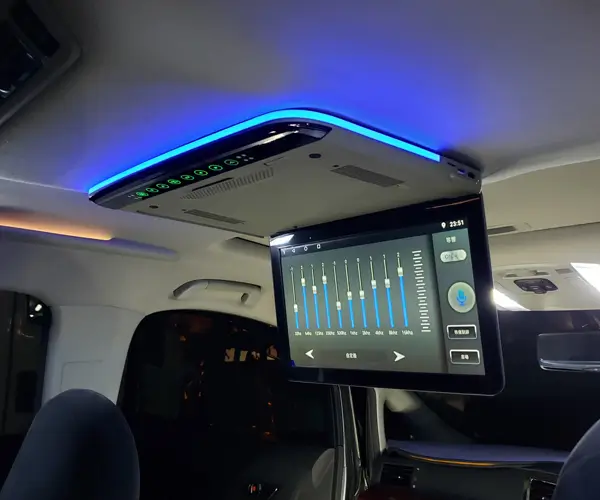Unlocking Power and Precision: The Marvel of 12V DC Motors with Gearbox
In the ever-evolving landscape of technological innovation, few components have managed to blend simplicity with incredible efficiency like the 12V DC motor paired with a gearbox. These tiny powerhouses are quietly revolutionizing industries from robotics to automation, offering unmatched versatility, control, and reliability. Whether you're crafting a DIY robot, designing a conveyor system, or building an automated project, understanding the magic behind a “motor dc 12v dengan gearbox” opens up a world of possibilities.

What Is a 12V DC Motor with Gearbox?
At their core, a 12V DC motor with gearbox is a direct current motor designed to operate on a 12-volt power supply, paired with a gearbox that modulates the speed and torque output. The motor itself converts electrical energy into rotational mechanical energy; however, its raw output often isn’t suitable for applications requiring precise control or substantial force. This is where the gearbox enters the scene.
The gearbox functions as a transmission system—an arrangement of gears that reduce speed while increasing torque, or vice versa, depending on the configuration. This gear reduction allows a small, fast motor to produce slow, powerful movement — ideal for applications demanding accuracy and force. Think of it as attaching a miniaturized transmission system to generate the kind of power and control that big machines rely on, but in a much more compact and efficient form.
Why Choose a 12V DC Motor with Gearbox?
There are multiple reasons why hobbyists, engineers, and industrial designers turn towards these motor-and-gearbox combos. First, their adaptability; whether you need high torque at low speeds or rapid movement at lighter loads, these units can be finely tuned to fit your needs.
Second, their efficiency and ease of use. Since they operate on 12V DC, they can be powered from a variety of sources—batteries, power adapters, or alternative power supplies—making them accessible and easy to integrate. Moreover, DC motors are known for their smooth control and responsiveness, enabling precise adjustments with simple voltage modulation.
Third, their compact size offers versatility. A 12V DC motor with a gearbox can be embedded into tight spaces, making them ideal for small robots, automation modules, or portable equipment. Despite their miniature stature, they pack a punch—delivering significant output relative to their size.
Applications Bringing These Motors to Life
Their practical applications are vast and diverse. Robotics is the most prominent sector, where such motors drive wheels, arms, or surgical tools with exact movements. Automation industries adopt them in conveyor belts, lifting mechanisms, or gate openers—tasks that require balance between power and finesse.
Similarly, DIY enthusiasts love them for custom projects—adding intelligent movement to personal inventions or even handcrafted models. The automotive sector also uses these motors for mirror adjustments, seat movements, or small control mechanisms, thanks to their reliability and ease of control.
Delving Into Gear Ratios and Performance
One of the key aspects that make these motors so versatile is the gear ratio—the relationship between the input (motor’s RPM) and the output (the gear’s rotational speed). A higher gear ratio means more torque but fewer revolutions per minute, enabling the motor to generate force for lifting heavier objects or turning larger wheels. Conversely, a lower gear ratio keeps the motor spinning faster but with less torque.
Choosing the right gear ratio depends on your project’s specific requirements. For example, a robot arm that lifts objects might require a high gear ratio for maximum torque, whereas an RC car needing quick accelerations might prefer a gear ratio favoring speed.
Manufacturers often offer gearboxes with pre-set ratios—like 10:1, 30:1, 100:1—each optimized for particular tasks. Some advanced units allow for adjustable gear ratios or multiple gear sets, giving users even greater flexibility.
Key Features to Consider
When selecting a motor with gearbox, several features warrant attention:
Voltage and Current Ratings: Confirm that the motor’s voltage aligns with your power source. Ensure the current draw doesn’t surpass your power supply’s capabilities. Gearbox Material and Durability: Gearboxes made from metals like aluminum or brass tend to last longer than plastic counterparts, especially under heavy loads. Efficiency and Heat Dissipation: Higher quality gearboxes dissipate heat better, maintaining performance over extended use. Size and Mounting Options: Depending on your project’s constraints, selecting a motor with compatible dimensions and mounting points is vital. Control Compatibility: Consider whether the motor is compatible with your control system—PWM controllers, H-bridges, or microcontrollers.
Emerging Trends and Innovations
As technology advances, so do these compact power units. Modern DC motors with gearboxes incorporate features like encoders for feedback control, allowing precise position or speed regulation. Innovations in gear materials and manufacturing processes have also increased efficiency and lifespan, making them more reliable than ever.
Established in 2005, Kpower has been dedicated to a professional compact motion unit manufacturer, headquartered in Dongguan, Guangdong Province, China.




































